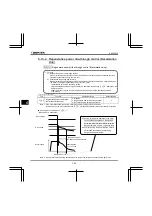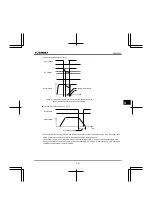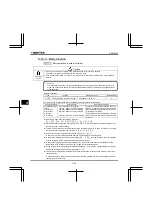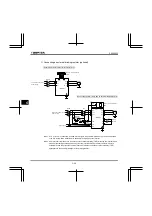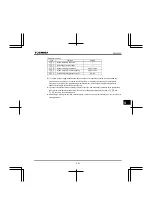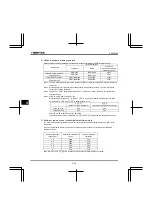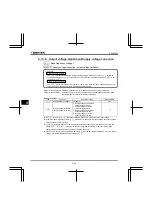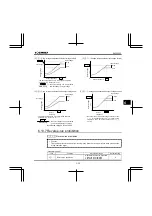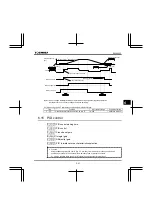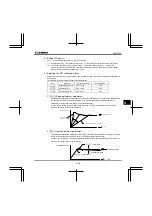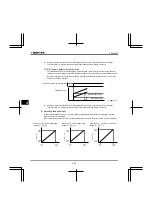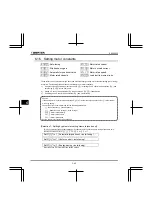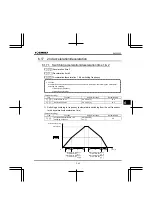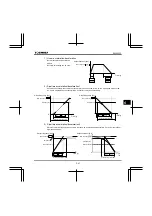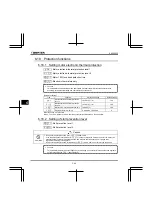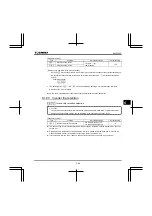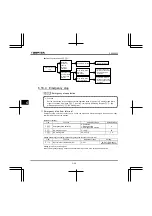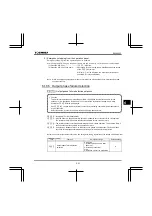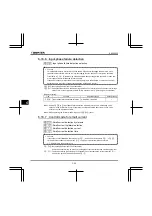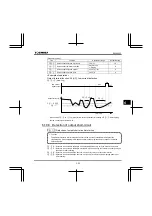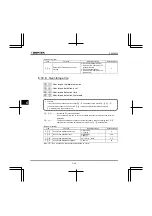
E6582233
F-39
6
3) Setting PID control
Set "
" in the extended parameter
(PID control)
(1) Set
parameters
(acceleration time), and
(deceleration time) to the system fitting values.
(2) To limit the output frequency, set parameters
(upper limit frequency) and
(lower limit
frequency). If process quantities are set with the setting dial, however, the process quantity setting
range will be limited by the settings of
and
.
4) Adjusting the PID control gain level
Adjust the PID control gain level according to the process quantities, the feedback signals and the object to
be controlled.
The following parameters are provided for gain adjustment:
Title
Function
Adjustment range
Default setting
Proportional gain (P)
0.01 - 100.0
0.30
Integral gain (I)
0.01 - 100.0
0.20
Derivative gain (D)
0.00 - 2.55
0.00
(P-gain adjustment parameter)
This parameter adjusts the proportional gain level during PID control. A correction value proportional to
the particular deviation (the difference between the process quantity and the feedback value) is
obtained by multiplying this deviation by the parameter setting.
A larger P-gain adjustment value gives faster response. Too large an adjustment value, however,
results in an unstable event such as hunting.
Slow response (
= Small gain)
Process quantity
Time
Feedback amount
Fast response
(
= Large gain)
(I-gain adjustment parameter)
This parameter adjusts the integral gain level during PID control. Any deviations remaining unremoved
during proportional action are cleared to zero (residual deviation offset function).
A larger I-gain adjustment value reduces residual deviations. Too large an adjustment value, however,
results in an unstable event such as hunting.
Residual deviation
Process quantity
Time
Feedback amount
(
= Large gain)
(
= Small gain)


